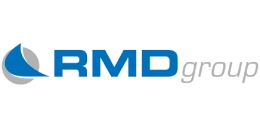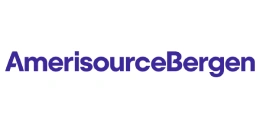Aloe Vera Gel Cost Model: Natural Extracts Cost Lens
_11zon.webp)
What is Aloe Vera Gel?
Aloe vera gel is a natural concentrate obtained from the parenchyma of the inner leaf of Aloe barbadensis miller, which is valued for its therapeutic, nutritional, and cosmetic uses.
Key Applications Across Industries:
The gel mostly comprises water (more than 95%) and polysaccharides, vitamins, minerals, amino acids, enzymes, and antioxidants responsible for its soothing, moisturizing, and healing actions. Renowned for its anti-inflammatory, antimicrobial, and skin-rejuvenating properties, the aloe vera gel finds broad application in personal care cosmetics, pharmaceuticals, food supplements, and beverages. The most important properties are its moisture-retentive character, cooling sensation, and bioactive nature, which enable it to be applied topically and ingested as well. Processing aloe vera gel is carried out through extraction, stabilization, and processing of the raw gel for maintaining its bioactivity and for ensuring product safety. Uses vary from skincare creams, shampoos, and sunscreens to food supplements, juices, and nutraceuticals. Benefits lie in its natural origin, extensive user acceptance, and multi-use utility. Sustainability is a compelling force, given that aloe vera is resistant to drought and can flourish in dry areas using low inputs. The outlook for aloe vera gel in the future is good, and demand is set to increase in harmony with natural cosmetics, herbal medicine, and plant-based functional foods trends.
What the Expert Says: Market Overview & Growth Drivers
The global aloe vera gel market size reached USD 303.4 Million in 2024. According to IMARC Group, the market is projected to reach USD 526.7 Million by 2033, at a projected CAGR of 6.3% during 2025-2033. The aloe vera gel market is shaped by a number of robust demand drivers. Increasing consumer preference for natural, herbal skincare products drives uptake within the personal care and cosmetics sector.
Growing awareness of the medicinal values of aloe vera in burn, wound, and digestive disorders contributes to its application in pharmaceuticals as well as nutraceuticals. The health and wellness movement, more so the growth of plant-based and functional beverages, stimulates consumption in the food and beverage industry. Growth in e-commerce portals has enhanced accessibility, with aloe vera-based products sale increasing worldwide. In addition, sustainable farming practices and drought tolerance of the plant render it a desirable raw material in the age of climate-sensitive sourcing. In the future, the market will be shaped by trends like vitamin-fortified aloe vera gel, gel products certified organic, and convergence with cutting-edge cosmetic formulations. The competitive edge comes from the versatility of aloe vera, its low cost of inputs, and customer confidence in natural remedies. Nonetheless, there are challenges of sustaining bioactive stability in processing, contamination threats, as well as market fragmentation with different standards of quality. From a sustainability standpoint, aloe vera farming minimizes water stress, and industry stakeholders are adapting with environmentally friendly packaging and green processing innovations to meet consumer attitudes.
Case Study on Cost Model of Aloe Vera Gel Manufacturing Plant:
Objective
One of our clients reached out to us to conduct a feasibility study for setting up a medium-scale aloe vera gel manufacturing plant.
IMARC Approach: Comprehensive Financial Feasibility
We developed a comprehensive financial model for the setup and operation of a proposed aloe vera gel manufacturing plant in India. This plant is designed to produce 200 tons of aloe vera gel annually.
Manufacturing Process: Commercial production of aloe vera gel requires controlled processes to maintain its bioactive content without compromising on safety and quality. The production starts from the harvesting of mature aloe vera leaves, which are cleaned and sterilized to eliminate contaminants. The outer rind is peeled off by hand or mechanically to get the inner gel fillet. The obtained gel is crushed or homogenized to have a uniform liquid solution. Stabilization is an important process, including pasteurization or cold-processing methods, sometimes with natural preservatives, to inhibit oxidation and microbial development without losing polysaccharides and bioactive compounds. Filtration may be applied to the gel to eliminate fibrous content and attain desired clarity. Intermediate processing involves mixing with additives like vitamins, herbal extracts, or flavorings based on end-use purposes. Quality control activities guarantee microbial safety, pH stability, and nutrient retention by analytical testing. The gel is thereafter filled into sterile vessels, tubes, jars, or bottles by automated filling and sealing equipment. Packaging is also made in a way to guard against light, air, and microbial contamination, usually with environmentally friendly materials. Final aloe vera gel products are supplied to cosmetic, pharmaceutical, food, and nutraceutical markets.
_11zon.webp)
Get a Tailored Feasibility Report for Your Project Request Sample
Raw Material Required:
The basic raw materials required for aloe vera gel manufacturing include fresh leaves and supportive inputs for processing and preservation. Key raw materials include:
- Fresh Aloe Vera Leaves
- Preservatives
- Stabilizers
- Herbal Extracts
- Fragrances
- Gelling and Coloring Agents
Machineries Required:
- Leaf Washing Tank / Bubble Washer
- Leaf Cutting / Trimming Machine
- Aloe Vera Leaf Peeling Machine
- Fillet Washer & Sterilizer
- Gel Extraction & Pulping Machine
- Filtration / Decanter Centrifuge
- Mixing Tank with Agitator (Stainless Steel)
- Homogenizer
- Pasteurizer (Plate/Tube Type Heat Exchanger)
- Cooling Tank
- Vacuum Evaporator
- Spray Dryer / Freeze Dryer
- Filling Machine
- Storage Tank
- Capping / Sealing Machine
- Labelling Machine
- Shrink Wrapping / Carton Packing Machine
- RO Water Treatment Plant
- CIP (Clean-in-Place) System
- Cold Storage Unit
- Material Handling Conveyors
Techno-Commercial Parameter:
- Capital Investment (CapEx): Capital investment in an aloe vera gel production plant addresses both agricultural and processing equipment. On the cultivation side, investment is required for land preparation, irrigation equipment, and nurseries for aloe vera plants. Processing equipment comprises washing stations, filleting units for leaves, homogenizers, pasteurization or cold-processing machinery, filtration equipment, and filling and packaging lines. Quality control laboratories for chemical and microbial testing are a critical component of CapEx to meet international standards. Cold storage and warehousing are needed for the retention of raw leaves and finished gel. Other investments include effluent treatment plants, boilers, HVAC systems, and renewable energy integration for sustainability. Automation of filling and packing lines is also included to account for high-volume orders and hygiene. Material handling equipment, production-tracking IT systems, and facility layout design are also included as CapEx. Eco-friendly packaging machines and recycling units of waste are increasingly being given importance by manufacturers to make sustainable production a goal. Together, these capital expenditures create a scalable and efficient system for manufacturing aloe vera gel for various consumer and industrial markets.
- Operating Expenditure (OpEx): Operating cost in aloe vera gel production is comprised of routine expenses related to raw materials, labor, utilities, and regulatory compliance. The purchase of new aloe vera leaves is the largest factor, dictated by crop yields seasonally and geographical location availability. Utility costs are electricity and water usage during washing, pasteurization, and packaging operations. Labor expenses are for harvest, gel extraction, quality assurance testing, and plant operations. Equipment maintenance, spare parts procurement, and regular calibration of lab instruments are recurring costs that are critical. The cost of packaging materials is a significant contributor to OpEx, especially for products ready to sell. Domestic or export market differences affect logistics and distribution expenses, with cold chain handling applicable to some formulations. Regulatory matters in compliance with cosmetic, pharmaceutical, and food-grade regulations impose costs on certifications, audits, and regular testing. Marketing and branding spendings are of paramount importance in this extremely competitive industry, frequently including e-commerce platforms and well-being campaigns. Sustainability expenses, for example, the usage of renewable energy, recycling of water, and biodegradable packaging, are being incorporated more and more. Successful OpEx management demands effective sourcing, deployment of energy-efficient technologies, and waste minimization processes in order to be profitable. Furthermore, raw material cost in an aloe vera gel plant ranges between 60-70%, labor cost ranges between 15% to 20%, and all other costs ranges between 10-25% in the proposed plant.
- Profitability Analysis Year on Year Basis: We assisted our client in developing a detailed cost model, which projects steady growth, with revenue rising throughout the projected period. Moreover, gross profit margins lie between a range of 15-25%, and net profit lie between the range of 10-15% during the income projection years, highlighting strong financial viability and profitability.
Conclusion & IMARC's Impact:
Our financial model for the aloe vera gel manufacturing plant was meticulously developed to meet the client’s objectives, providing an in-depth analysis of production costs, including raw materials, manufacturing, capital expenditure, and operational expenses. By addressing the specific requirements of producing 200 tons of aloe vera gel annually, we successfully identified key cost drivers and projected profitability, considering market trends, inflation, and potential fluctuations in raw material prices. This comprehensive financial model equipped the client with valuable insights into strategic decision-making, demonstrating our commitment to delivering high-quality, client-focused solutions that ensure the long-term success of large-scale manufacturing ventures.
Latest News and Developments:
- In May 2025, LR Health & Beauty, known for its high quality aloe vera available on the market has launched its special blend of fermented aloe vera and pure aloe vera leaf gel, further advancing in skin care cosmetics science.
- In January 2025, Dabur India Ltd. has announced the launch of 100% pure aloe vera gel. To meet the changing skincare demands of consumers, the new Dabur Aloe Vera Gel, enhanced with hyaluronic acid, blends scientific innovation with natural care.
- In December 2024, Aloecorp Inc., a multinational aloe vera corporation, has purchased Pharmachem's aloe vera section. Aloecorp now has a new processing plant as a result of the acquisition, making it its third Mexican production site.
Why Choose IMARC:
IMARC's Financial Model Expertise: Helping Our Clients Explore Industry Economics
IMARC is a global market research company that offers a wide range of services, including market entry and expansion, market entry and opportunity assessment, competitive intelligence and benchmarking, procurement research, pricing and cost research, regulatory approvals and licensing, factory setup, factory auditing, company incorporation, incubation services, recruitment services, and marketing and sales.
Under our factory setup services, we assist our clients in exploring the feasibility of their plants by providing comprehensive financial modeling. Additionally, we offer end-to-end consultation for setting up a plant in India or abroad. Our financial modeling includes an analysis of capital expenditure (CapEx) required to establish the manufacturing facility, covering costs such as land acquisition, building infrastructure, purchasing high-tech production equipment, and installation. Furthermore, the layout and design of the factory significantly influence operational efficiency, energy consumption, and labor productivity, all of which impact long-term operational expenditure (OpEx). So, every parameter is covered in the analysis.
At IMARC, we leverage our comprehensive market research expertise to support companies in every aspect of their business journey, from market entry and expansion to operational efficiency and innovation. By integrating our factory setup services with our deep knowledge of industry dynamics, we empower our clients to not only establish manufacturing facilities but also strategically position themselves in highly competitive markets. Our financial modeling and end-to-end consultation services ensure that clients can explore the feasibility of their plant setups while also gaining insights into competitors' strategies, technological advancements, and regulatory landscapes. This holistic approach enables our clients to make informed decisions, optimize their operations, and align with sustainable practices, ultimately driving long-term success and growth.
Our Clients
Contact Us
Have a question or need assistance?
Please complete the form with your inquiry or reach out to us at
Phone Number
+91-120-433-0800+1-201-971-6302
+44-753-714-6104










